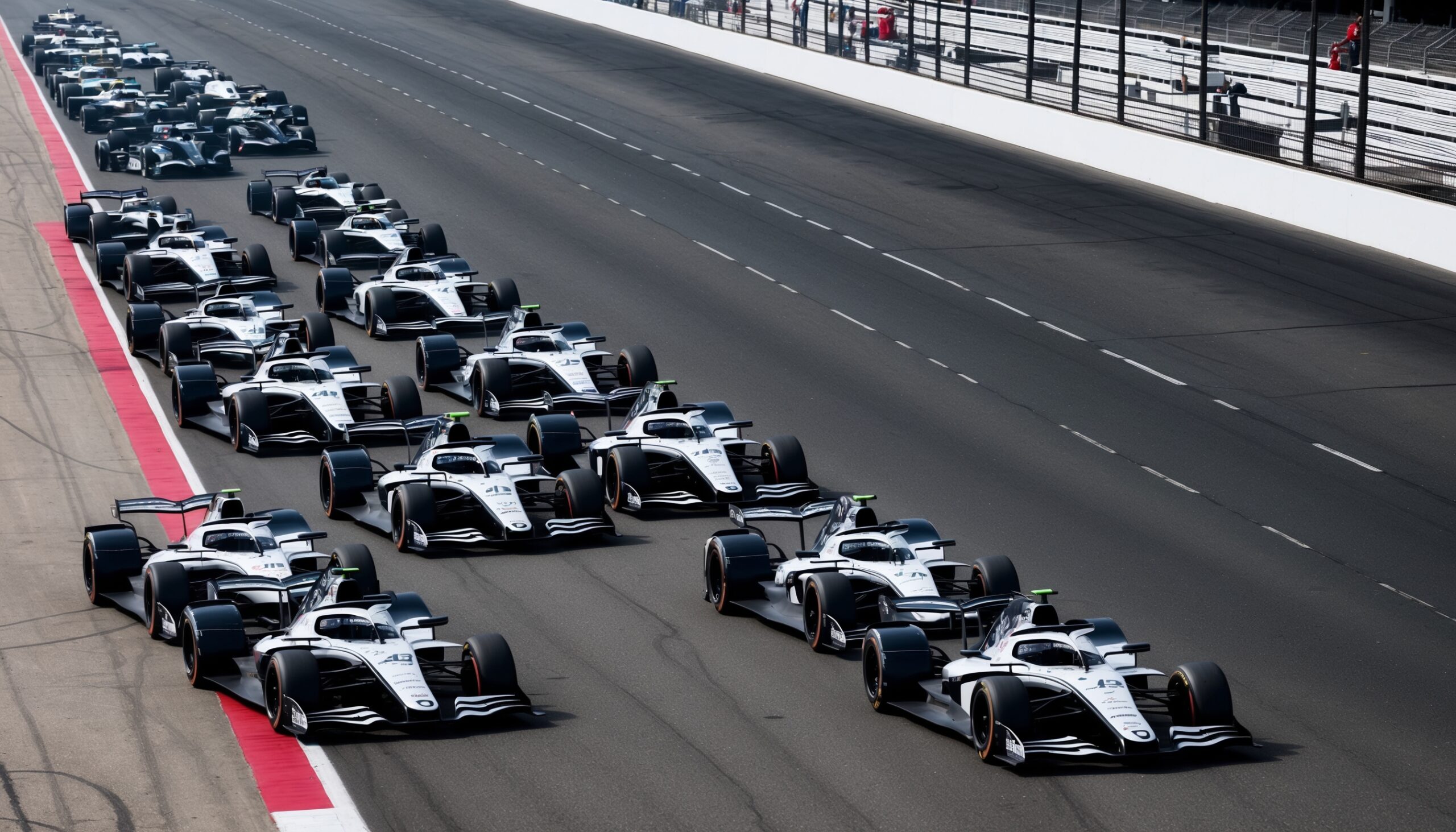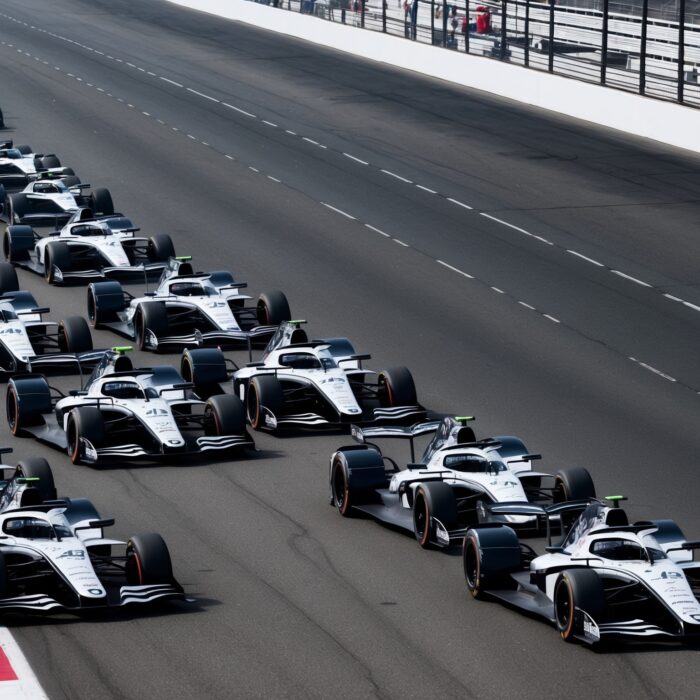Best F1 Teams Will React and Develop Quickly to 2026 Rules, Says Mattia Binotto
As the excitement around Formula 1 continues to grow, the anticipation surrounding the 2026 regulations is palpable. With a new set of rules set to reshape the sport, teams are gearing up for what promises to be a transformative era in F1 racing. Mattia Binotto, former team principal of Scuderia Ferrari, recently shared his insights on how the best F1 teams will adapt and evolve to meet these upcoming changes. Here at Torque Feed, we dive deeper into his thoughts, the implications of the new rules, and how they might affect the teams and drivers in the coming seasons.
The Changing Landscape of F1
The world of Formula 1 is no stranger to change. Each season brings with it a wave of innovations and regulatory updates designed to improve safety, sustainability, and competition. The 2026 regulations will be no different, with a focus on hybrid power units, increased electrical efficiency, and a push towards more sustainable fuels. Binotto believes that these changes will not only challenge the teams but also provide an exciting opportunity for those willing to adapt swiftly.
The Importance of Agility in Development
One of the key takeaways from Binotto’s comments is the emphasis on agility. In a sport where every millisecond counts, the ability to react quickly to new regulations can be the difference between winning and losing. Binotto stated, “The best teams will always find a way to adapt to new rules more efficiently than others.” This highlights the importance of having a well-structured development process and a team that can pivot when necessary.
Who’s Leading the Charge?
When it comes to agility, it’s the top teams that typically set the pace. Historically, teams like Mercedes, Red Bull Racing, and Ferrari have shown the ability to innovate rapidly in response to changing regulations. But what exactly gives these teams their edge?
Also Read: Racing Bulls unveils holographic F1 livery for Las Vegas
- Resources: Top teams have access to substantial financial and technical resources, allowing them to invest in research and development.
- Experienced Personnel: With seasoned engineers and strategists, they can better forecast the impact of new rules and implement changes swiftly.
- Strong Driver Feedback: Having drivers who can provide valuable insights into car performance is crucial for rapid development.
What to Expect From the 2026 Regulations
The 2026 regulations are expected to introduce a host of changes, especially in the engine department. The shift towards a more sustainable approach means that teams will have to reconsider their engine designs significantly. The focus will be on hybrid systems, with a greater emphasis on the electric component of the power unit.
Hybrid Power Units
The new power units will feature a more efficient hybrid system, which will likely increase the electrical output while reducing the reliance on traditional fuel sources. This shift not only aligns with global sustainability goals but also introduces a new layer of complexity in car design and engineering.
Fuel Regulations
Another significant aspect of the 2026 rules is the move towards sustainable fuels. The F1 governing body aims to ensure that the fuels used in the sport are environmentally friendly. This change poses both challenges and opportunities for teams, as they must adapt to new fuel characteristics while maintaining performance levels. Binotto expressed confidence that the leading teams would find innovative ways to integrate these fuels into their power units effectively.

The Role of Simulation and Data Analysis
In the fast-paced world of F1, data is king. With the introduction of new regulations, teams will rely heavily on simulation technology and data analysis to understand how to develop their cars in line with the new rules. Binotto mentioned, “Teams that can leverage technology for simulation will have a competitive edge.” This is particularly true for the 2026 regulations, where understanding the interplay between the hybrid systems will be crucial.
Investing in Technology
Leading teams are already investing heavily in advanced simulation tools to predict how their cars will perform under the new regulations. These tools allow engineers to model various scenarios and make informed decisions on design changes, weight distribution, and power unit integration.
The Human Element
While technology plays a vital role, the human element cannot be underestimated. Engineers, strategists, and drivers must work in tandem to ensure that the car’s design translates effectively from the simulation to the track. Binotto emphasized the need for collaboration within teams to harness collective expertise, stating, “When everyone is aligned, the results can be astonishing.”
Challenges Ahead for Teams
With the excitement of new regulations comes a set of challenges that teams must navigate. Binotto pointed out that while the best teams will adapt quickly, there will still be hurdles to overcome. Understanding the nuances of the new rules and how they impact car performance is essential for success.
Testing and Development Timelines
One of the primary challenges will be the limited testing time available for teams to develop their cars. Traditionally, F1 teams have relied on extensive testing to fine-tune their vehicles before the season starts. However, with tighter regulations and a focus on sustainability, teams may find themselves with less time to test and develop new components.
Cost Management
As teams invest in the development of new power units and technologies to meet the 2026 regulations, cost management will become increasingly crucial. The budget cap introduced in recent seasons adds another layer of complexity, as teams must balance performance improvements with financial constraints. Binotto noted, “Teams will need to be strategic in how they allocate their resources to remain competitive.”
Looking Ahead: The Race for 2026
The race to prepare for the 2026 regulations is already underway, with teams ramping up their development efforts. As the clock ticks down to the implementation of these new rules, the pressure to innovate and adapt will only increase. Binotto’s insights remind us that while change can be daunting, it also presents an exciting opportunity for growth and evolution in the sport.
The Potential for New Contenders
With the introduction of new regulations, there is a real possibility for teams that have not traditionally been at the forefront of F1 to rise to prominence. Teams with strong engineering capabilities and a willingness to embrace change could emerge as serious contenders in the coming seasons. Binotto believes that the dynamic nature of F1 will make for an exciting 2026 season, stating, “We might see surprises on the grid.”
Also Read: Tyler Reif signs deal with Niece Motorsports for 2026 NASCAR Truck season
Fan Engagement and the Future of F1
As the sport evolves, so too does the way fans engage with F1. The move towards sustainability and innovative technologies will likely resonate with a broader audience, attracting new fans who are passionate about environmental issues. Binotto highlighted the need for F1 to remain relevant, saying, “The future of F1 is not just about speed; it’s about sustainability and innovation.”
Conclusion
As we look ahead to the 2026 regulations, it’s clear that adaptability will be key for success in Formula 1. Mattia Binotto’s insights remind us that the best teams will not only have the resources to react quickly but will also possess the ingenuity to turn challenges into opportunities. The upcoming seasons promise to be filled with thrilling developments, and as always, Torque Feed will be here to keep you updated on every twist and turn in the world of F1 racing.












